Oh, People, have I got a treat for you!
For those of you who have visited the Favorites page, you might recognize H. R. D’Costa as the author of WWT’s reigning plot book, Sizzling Story Outlines*. Well, I got this crazy idea to ask her if she’d be willing to do an interview with us–and SHE SAID YES!
And–oh, man–does she deliver. So, without further ado, I give you: Craft Guru H. R. D’Costa.
WWT: In Sizzling Story Outlines*, the first book in your Iterative Outlining series, you walk us through a two-part process of discovering a story’s bones: first, finding the major plot-points, and then developing a starter outline with the Walkenwright method. It’s so quick and so brilliant. How did you develop this process?
HRD: First, Megan, let me say thank you for inviting me to WritesWithTools. I’m honored to be here.
All right *rubs hands with glee* let’s dive into the questions!
To provide a little context for your readers: the term walkenwright is a play on the words walk and write. With the walkenwright method, these two activities are paired together in such a way that you can generate a complete list of plot points for your story (i.e. your starter outline) in as little as 2 hours. (WWT: It’s true, People. I had a bare-bones outline in two hours.)
As acknowledged in Sizzling Story Outlines, the walkenwright method was heavily inspired by Hal Ackerman’s snowplow method, which he describes in Write Screenplays That Sell—The Ackerman Way.*
I liked that method a lot—it’s definitely helpful to overcome blocks—but it’s also time-consuming. I wanted to streamline the process. Happily, I found a way to do that once I observed that I enjoyed running through iterations of my story in my head (especially when going for walks).
Later, I came across scientific research that partially explains why the walkenwright method is an effective outlining tool.
Even without the science, though, I think it’s a great combination. Why?
You get in some exercise (and help combat the sedentary nature of writing) while, at the same time, making progress on your work in progress (WIP).
It’s a win-win!
Not to be persnickety, but I have to say it…I consider developing a starter outline to consist of three parts (not two). (WWT: My bad.) To sum them up quickly, they are as follows:
- Making sure your story idea isn’t a waste of time (what I like to call popping the story kernel).
- Cracking your story’s structural code.
- Filling in the remaining plot points between each structural turning point (this is where the walkenwright method comes into play).
Although I can see why you might group #1 and #2 together, I prefer to treat them separately. This way, you’re more likely to include crucial storytelling elements that often get overlooked when, due to your enthusiasm, you rush into outlining (or, perhaps, pantsing).
In particular, hooks and stakes are two elements that you could neglect to incorporate into your concept if you don’t consciously pause and conduct a “flight check.”
To elaborate a little further on these two elements:
Hooks are an audience attractor. They convince others (agents, editors, producers, book buyers, moviegoers, etc.) to invest time and/or money into your screenplay or novel.
So hooks (along with genre) help turn your story into an easy sell.
Obviously, this is beneficial to anyone who wants to make a living with their writing—but it’s especially beneficial if selling is stressful or feels sleazy to you. You can let genre and hooks do the selling for you—no hard sales push required. (WWT: Yes, please.)
Here’s a good example: a heist on the moon.
Five words, and I’m immediately intrigued and want to know more.
How ’bout you?
(WWT: Yup, and I think I read it.)
This hook, by the way, comes from the premise of Andy Weir’s recent novel Artemis.* (WWT: Yup, I did read it.) It’s the moon setting that elevates the heist plot, turning it into something special. But there are other hooks besides setting—irony being a notable example.
Think about this: if you make your premise appealing enough (through irony or other kinds of hooks), you can sell your story on that strength alone—even if you, unlike Andy Weir, don’t have the juggernaut success of The Martian* in your back pocket.
By the way, chapter 6 of Sizzling Story Outlines* is devoted completely to hooks. In it, I discuss five different combinations of irony that you can immediately use to make your premise more commercial. (Incidentally, the fifth one is a must-have if you want to break into the romance market.)
Hooks are how you initially attract audiences. But once you hook audience members, your work isn’t over. You have to keep them hooked!
Stakes, i.e. the negative consequences of failure, contribute mightily to this. That’s because stakes help secure audiences’ emotional involvement.
Stakes are a big topic, so I couldn’t explore them at length in Sizzling Story Outlines. But if you’re interested in learning more about them (and how to raise the stakes—even when they’re already high to begin with!), check out Story Stakes: Your #1 Writing Skills Strategy to Transform Readers into Raving Fans & Keep Them Turning the Pages of Your Screenplay or Novel.*
WWT: Stakes was the first book of yours that I read. It was so helpful, that I immediately read the rest, and, somehow, was even more blown away with the Iterative Outlining series. With the next two books in that series, Solid Story Compass* and Sparkling Story Drafts,* you essentially give us the tools to be our own developmental editors (for which I cannot thank you enough). Most people expect their developmental edit to happen during a later, fully written draft, but in your method it occurs during the outlining stage. I LOVE this. And yet I’m finding myself resisting the process anyway, wanting to find every single detail of my story (not through writing it, but through brainstorming it) before I move on to the processes in Compass and Sparkling. Would you mind walking us through your post-Walkenwright, pre-Compass/Sparkling process and tell us whether/how you confront resistance?
HRD: It’s interesting that you bring up resistance because…I’m a very contented plotter. *grin*
Not everyone is like that, though. It seems to me that you’re a pantser at heart. *smile* (WWT: Interesting . . .)
Just to make sure everyone’s on the same page, let me define terms. A plotter is a writer who outlines his stories in advance. A pantser writes on the fly, by the seat of his pants, without an outline.
I know many pantsers find it fun—and freeing—to write without an outline. But for me, that’s stressful!
If I wrote by the seat of my pants, I’d wonder whether everything would fit together when I’m done. And then, if everything didn’t fit together, I’d stress about how much effort it would take to make it fit.
If pantsing works for you, then I’d stay with it. But if it ever becomes stressful (and you’re tired of all the time you have to spend on revisions), then try to overcome your resistance and embrace outlining—but to a degree that feels comfortable to you.
Because writing should be about making a living by doing something you love. In other words, you should choose a process that provides you with FUN when you write.
Actually, in Sparkling Story Drafts, I discuss how there are two types of fun:
There’s the fun of efficiency (which plotters enjoy) and there’s the fun of adventure (which pantsers enjoy).
But by choosing one, you have to accept that you’re going to have to give up the other. You have to make a tradeoff.
As a pantser, you can probably achieve a happy compromise through a loose outline based on story structure. That’s because structure is a big-ticket item. If it’s not in place, it usually requires a massive rewrite to fix. This is time-consuming, not to mention mentally exhausting.
But if you already have your structural signposts in position, then you can avoid this hassle. Yet, at the same time, you have the freedom to “pants away” between the signposts. There’s still plenty of your story left to discover. It’s the best of both worlds, right?
If you’re a pantser and a loose outline sounds like an enticing prospect, you can learn how to develop a loose outline in advance just by reading Sizzling Story Outlines.*
Or you can enroll in my online course Smarter Story Structure. It’ll give you a shortcut so you can hit the ground running and create a story that readers won’t abandon. (The course is also ideal if you learn better with visuals and video.)
Let’s look beyond loose outlines for a second. To produce a story that captivates audiences—a story that you’re proud of—I do believe that you have to evaluate it based on the principles discussed in the Iterative Outlining series.
Iterative outlining consists of three stages. As a quick summary:
Stage 1: Generate Raw Material
This is where you take your initial burst of inspiration and refine it. Afterward, you build your story structure.
If you’re a pantser, you could stop here, with your loose outline based on story structure. If you’re a plotter, you’d continue on, and fill in the plot points that remain between each structural signpost.
Stage 2: Articulate Your Intent
At this stage, you’ll verify that your story isn’t suffering from an identity crisis. You’ll make sure that it has a strong, cohesive identity.
Specifically, you’ll make sure that your story remains consistent with regard to:
- plot
- protagonist
- genre
- tone
- theme
As a couple of examples to give you an idea of what I’m taking about: audiences should never be confused about who’s the protagonist of your story. (This often happens when you’re empathetic toward one character, but more excited to write about another.)
Likewise, the genre of your screenplay or novel shouldn’t change partway through your story.
Stage 3: Fix Problem Spots
This is where you’ll verify that your story is entertaining, and, at the same time, both credible and emotionally compelling.
You’ll work on issues like these:
- The plot is episodic, doesn’t escalate well, or is loaded with contrivance.
- Opportunities to heighten audience emotion have been overlooked.
- Characters have been sacrificed for the sake of the plot (or other reasons).
- The subplots detract, rather than contribute toward, the main plot.
- The pacing is monotonous or sluggish (or perhaps, too frenetic).
- The cast is too large to keep audiences involved in what’s happening.
- You’ve undermined your protagonist at the last minute.
Basically, all the evaluative work you do as part of the stages of iterative outlining is nonnegotiable. You have to do it. But how/when you conduct this analysis is up to you.
Again, you get to choose your brand of fun. Do this analysis up front, with an outline, and enjoy the fun of efficiency. Do it after the fact, when you’ve pantsed through a draft, and enjoy the fun of adventure.
It’s your call. That’s the beauty of it…
…which brings me to the other aspect of your question. When you explain a process to others, you have to present steps in a rather formalized way, i.e. do x, then y, then z. This helps to maintain clarity.
But when you’re using the process for yourself, then you can be more flexible. *grin* While I do follow the steps in the Iterative Outlining series, I don’t follow them exactly as presented.
I’ve adapted the process to work best for me—and I encourage you (and your readers) to do the same!
WWT: It looks like you interpreted my question a little differently than I intended. But it’s all good. I found an answer through your answer. When I’ve got my starter outline in hand, I know I’ve got a viable story. But then I put the outline aside altogether. See, the projects I’m drawn to require research. So after I finish outlining, I’m brainstorming and doing initial research, to make sure that the research I’m hoping to find (to support the story) actually exists. You wrote that outlining efficiency or pantsing adventure is our fun. For me, brainstorming is the most fun, so that’s where I spend most of my time. Once I know how the research works out, the plot’s easy, and I can tighten it with Compass and Sparkling. So yeah, I guess I’ve just got my own way. And that’s okay. Like you said, I’m using the process that works best for me. =) So, HRD, who was the craft guru who first made story craft click for you? What aspect of the craft (plot, character, scenes…) was that person’s specialty and what was the number-one thing you remember from his or her teachings?
HRD: Many years ago, through assistance from my dad (thanks dad!) I was able to attend Robert McKee’s Story seminar.
McKee’s known for his system of changing values (actually, you can find a condensed explanation of that in Sparkling Story Drafts*), but that wasn’t the most valuable takeaway I got from the seminar.
The most valuable takeaway I got was this: read a screenplay, watch the produced version of the film, and analyze the differences. According to McKee, if you do this, you’ll learn loads.
And he was right.
As a matter of fact, “screenplay vs. film” analysis became a key feature of my writing website Scribe Meets World (which is why I consider this advice to be my #1 takeaway from the seminar).
However, conducting these comparisons takes a lot of time. So while it’s a valuable technique and I highly recommend it, you might want to narrow your focus when you implement it.
For instance, you could:
- Read my screenplay-vs.-film analysis for Ocean’s Eleven (2001) just to get a feel for the process.
- Analyze a few films in the genre that you want to specialize in.
- Analyze a few films that share similarities with your current WIP. (In publishing, such stories are known as comps. In Selling Your Story in 60 Seconds,* Michael Hauge refers to them as antecedents.)
This seems to be a good time to mention that conducting screenplay-vs.-film comparisons is valuable for both screenwriters and novelists. However, screenwriters will get more mileage out of this endeavor. That’s my opinion at least.
Also, when I was starting out, I found Blake Snyder’s beat sheet (which he describes in his screenwriting guide Save the Cat*) to be enormously helpful.
However, at the same time, I also found it frustrating. I knew that I needed something strong to mark the end of the first act; I knew that I needed a midpoint—but I didn’t know what to put in these places.
To figure out those things, I embarked on my own course of self-study. That’s what made everything really click for me. As a matter of fact, I think it’s the best way to build up your writing skills.
But, not gonna lie, it takes time. (It took me years.) (WWT: Yeah, me too, and still working on it.)
Plus, it’s not easy. It requires discipline and dedication. That’s because you have to watch hundreds of movies (plus read several screenplays and novels)—and not for fun, either. You have to watch/read these stories critically, pausing to take notes. After that, you have to put all your notes together into a framework that you can use again and again.
If you have the time to invest in this, then I recommend that you go DIY. But if you don’t have the time (or if you prefer to spend your time writing rather than analyzing films, screenplays, and novels), then invest funds to acquire the knowledge you don’t have time to gather.
For example, say you realize how much mastering the midpoint is going to help you. It’ll make writing that looooong hunk of Act Two much more manageable. Plus, a strong midpoint will swing your story in a new direction. This will prevent the middle of your story from becoming monotonous—and thus prevent audiences from getting bored.
While you recognize the value of the midpoint, you don’t know what to use as a midpoint. You could take the time to figure this out on your own…or learn it instantly *alert, shameless plug forthcoming!* by:
- reading Sizzling Story Outlines*
- reading Midpoint Magic*
- enrolling in Smarter Story Structure
All of these resources describe eight midpoint fulcrums that you can use to prop up the middle of your story and prevent it from sagging. (WWT: And describes them brilliantly, I might add. Very idea inspiring.)
For more great sources of knowledge to invest in, check out Megan’s master list of writing books.
WWT: To which I will be adding several books mentioned herein post haste. You’ve already given us so much food for though, but–what can I say?–I’m a glutton for craft. So . . . which readily-available resources for storytellers do you consider the industry’s best-kept secrets? What makes them excellent?
HRD: That’s a great question, Megan. In response, I came up with a list of resources that I think your readers would benefit from.
They’re not exactly secrets. Even so, at least one of them should be an exciting new discovery!
Here we go:
(1) Terry Rossio’s Wordplay
Terry Rossio co-wrote most of the Pirates of the Caribbean films. Enough said.
When I found his collection of 50+ columns on the site, it felt like I had stumbled across a treasure chest of information. *grinning at the pun*
(2) Carson Reeves’s Scriptshadow
Reeves posts an analysis of a screenplay almost every weekday. You can learn a lot from his insights.
He also shares info (which isn’t on the website) in a newsletter. It’s worth making room in your inbox for the newsletter.
(3) Scott Myers’s Go into the Story
Screenwriter and writing professor Scott Myers has been blogging for ages. He’s been blogging for so long, that it can feel rather overwhelming to gather up the gems from his site Go into the Story.
Fortunately, he’s taken the time to compile some of his best advice into a library of PDFs which you can download for free here.
(4) Great Curators
If you can find great curators, then you can spend more time writing and less time weeding through writing blogs and industry news. Two curators I recommend are Elizabeth Spann Craig and Joanna Penn.
Craig posts a roundup of helpful links every Friday, under the heading Twitterific Writing Links. Missed one? No problem. You can find a searchable database of all the links here.
Penn often presents a digest of what’s happening in the world of publishing in the intro of her podcast. You can find an archive of her podcasts here.
Even though I wouldn’t classify Kristine Kathryn Rusch as a curator per se, I’d like to add her Business Musings blog to this list because she analyzes trends in publishing from an angle you don’t often find. Plus, she dives deep into whatever topic she’s discussing.
If you’re thinking about pursuing a traditional publishing path, her article on the grant of rights clause is a must-read.
(5) Julia Cameron’s Morning Pages
This is Cameron’s strategy to combat writer’s block: write three pages in longhand, every morning. Easy, inexpensive—and most important, effective.
You can find more about it (plus another tool she calls artist dates) in her book The Artist’s Way* (which is a great gift for any writer!).
(6) Flower Essences
I’ve grown up using something called flower essences. You might say they’re my secret sauce 🙂
To give you an idea of what you can do with essences, here are a few that are helpful for writers:
- ELM to combat overwhelm
- OLIVE to alleviate mental and/or physical exhaustion
- MIMULUS to overcome the fear of failure (WWT: Where do I get this one?!?)
- RABBITBRUSH to keep tabs on multiple details without losing sight of the big picture
- BLACKBERRY to bring what you see in your mind’s eye into reality
I don’t want to bombard you with details, but if you’re interested in learning more (WWT: Yes, please), you can find:
- an overview at Healing Herbs
- video tutorials at the Bach Educational Resource (run by Healing Herbs)
- a library of PDF resources at Flower Essence Services
If you’re not used to flower essences, you might not want to deal with creating your own blend. Fortunately, there’s an easy way to dip your toe in the water: just try a premade blend.
Flower Essence Services makes two that are particularly relevant to writers: Mind-Full and Activ-8. Find details about both here.
PS: If you’re a pet owner, you might want to check out the Animal Relief Formula. Gotta take care of our furry friends! (WWT: I know the pugs thank you.)
Also, just in case it isn’t clear, I’m not affiliated with Healing Herbs or Flower Essence Services. I just love their products. (WWT: Ditto here about HRD.)
Okay. That’s my list of resources.
Now, I’d like to answer your question in a different way—to speak to the spirit of it. To me, this can be summed up under the heading Things I Wish I Had Known When I Started Out…
I wish I had learned earlier about how to level up my writing. For instance, after you get a handle on story structure, what should you study next?
Here are a few aspects of storytelling I wish I had mastered sooner:
- stakes (I really believe that’s true, I’m not just saying that because I wrote a book on it!)
- sequences
- escalation
You already know where to learn more about stakes (my book,* of course *wink*). To learn more about sequences, check out Paul Joseph Gulino’s guide Screenwriting: The Sequence Approach.*
To learn a neat midpoint trick that will help with escalation, read this article on Scribe Meets World.
It takes time to master these skills—much more time than you anticipate. That’s something else I wish I had realized sooner. Carson Reeves discusses this here.
In his article, he mentions a short film called The Long Game. I encourage you to take 4 minutes out of your day to watch it. Find it here. (WWT: No really, watch it, especially if you’re feeling impatient.)
One last thing I wish I had realized earlier:
To succeed in this business, it’s not just about developing your writing skills. In addition, you need to develop your mental toughness.
Bonus: this will help you with any endeavor, not just with screenwriting and publishing.
A good place to start with is Amy Morin’s article 13 Things Mentally Strong People Don’t Do.
WWT: I feel like I just received a treasure chest of secret craft goodies and should now hole up in my office with them, with a sign on the door that says, “Don’t bug me, I’m in Heaven.” Sparkling Story Drafts* is the last book in the Iterative Outlining series. What’s next for you? Any more craft books? (Please say yes. =D)
HRD: Yes. Sort of 😉
I definitely have more craft books that I’d love to write. But at the moment, I’m focusing on expanding the available formats of the books I’ve already written.
If you love print books, good news: the Iterative Outlining series will soon be available in paperback.
Assuming everything goes as expected, they’ll be enrolled in Amazon’s MatchBook program, too. So if you’re an Amazon customer, and you buy the paperback edition first, you should be able to purchase the ebook edition afterward, at a special discounted price.
Hmmm. When the print editions are ready, a giveaway for WritesWithTools readers seems like an excellent idea to me. What say you, Megan?
WWT: OHMYGOODNESS, YES!
Until then, you can check out the digital editions right here . . .
The book cover links above are Affiliate Links, which means I get a commission if you decide to make a purchase through these links, at no cost to you. In other words, if you’re thinking of buying a copy of one of these books for your home craft library anyway, buying said copy through this link is a no-brainer way to help support this site. And I appreciate it. Thank you!
* * *
H. R. D’COSTA is passionate about making the art of storytelling less scary for screenwriters and novelists. That’s why she created scribemeetworld.com, where she explains basic storytelling fundamentals—and complicated nuances—in an accessible, straightforward way.
Learn how to use story structure to get on audiences’ good side through her meaty^ (and free!) Ultimate Story Structure Worksheet (downloaded over 30,000 times by writers from around the world)…or through her online course Smarter Story Structure (it’ll be like getting all the great takeaways from a weekend writing seminar, but from the comfort and convenience of your own home).
A graduate of Brown, she is the author of eight writing guides, which put various storytelling concepts “under the microscope.” As one Amazon reviewer described Inciting Incident,* “It lists…things I’ve had problems with but never seen anyone address directly, and describes in depth several ways to fix the problem—with examples.”
Check out her latest addition, Sparkling Story Drafts: How to Outline Your Way Toward Cleaner Rough Drafts, Reduce Your Revision Time, and Get a First-Rate Screenplay or Novel onto the Marketplace—Faster (Iterative Outlining Book 3).*
^ Megan picked the adjective meaty. I happen to agree…but I might be a little biased.
WWT here.
What did I tell you? Are we the luckiest readers ever, or what? Major THANK YOU to H.R. D’Costa for sharing her craft wisdom and resources with us! If you haven’t checked out her craft books yet, you really should. They really are my plot favorite; I’m not just saying that. All eight are excellent. Excellent, excellent, excellent.
If you found this post helpful, please . . .
1. Like it and share it! There are share buttons below . . .
2. Subscribe to the Blog to receive the Tools in your inbox as soon as they post:
3. Subscribe to the Newsletter. It’s a monthly-to-quarterly-ish (that’s still vastly overstating it) newsletter to share news and free worksheets and whatnot. Your welcome email will include the 19-page Character Development Workbook. You can subscribe here.
4. And if you found it particularly helpful . . .
Thanks!
Up Next
I’m still working on scene posts, but I think I’m going to do a rhythm in plotting post or two between now and then to buy myself some more time. Hopefully it’ll post Monday, but it might be a couple Mondays. I don’t feel too bad though. H. R. D’Costa has given us PLENTY to keep us occupied between now and then.
See you soon!

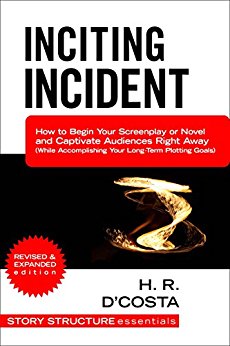
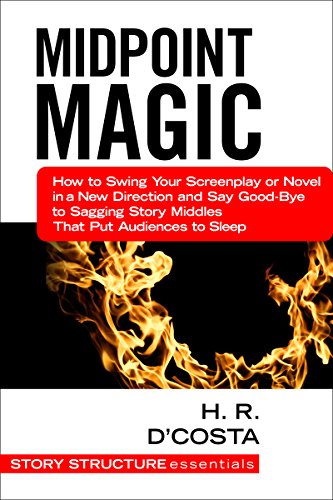

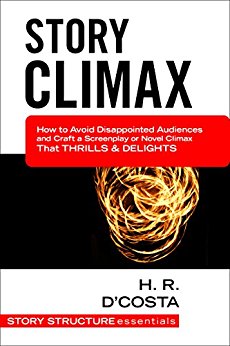

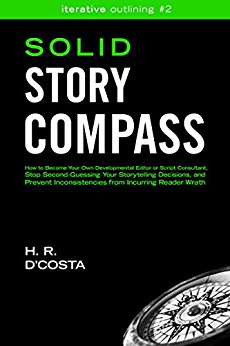
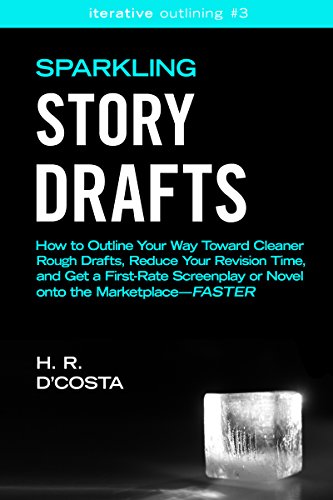


thanks, Writes with Tools for sharing the interview with D’Costa. I’ve just bought her fantastic text books on Amazon and many, many things just fell into place. Wish I’d known these techniques years ago! I’ve been traditionally published and boy, my book would have been a lot better knowing her ideas! Thanks again. Go D’Costa! She should be better known!
LikeLiked by 1 person